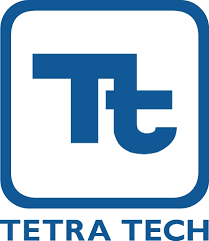-

XDD was selected because we wanted someone who would listen and understand the issues at the site. Bringing XDD into the project didn’t save short term funds, but it did save 5 years of extra time on the project…
Benne C. Hutson, McGuireWoods LLP
-

I really can’t think of anything that I’d have you do better. Other than get cheap permanganate, but I know that’s not under your control.” – with respect to in situ chemical oxidation design
Derek Pinkham, Tetra Tech, EC Inc.
Air Sparging and Soil Vapor Extraction
<h3>Dover Superfund Landfill</h3>
<p><a href="https://www.xdd-llc.com/remedial-strategy-2/"><img class=" wp-image-495 alignleft" src="https://www.xdd-llc.com/wp-content/uploads/2014/08/remedial-strategy.jpg" alt="" width="200" height="129" /></a>During a pre-design investigation, a “hot spot” area was discovered in the NW area of the landfill. XDD was contracted to evaluate alternate technologies, and to design, install and implement the selected “hot spot” treatment system. An air sparging/soil vapor extraction system was selected, pilot tested, designed and installed in 2008. The system started operation in 2009 and removed over 43,000 lbs of VOCs. The system met objectives and has since been decommissioned.</p>
<h3>Woodland Township, NJ</h3>
<p>XDD and Bigler Associates, Inc. operated and monitored the remedial performance of large air sparging, soil vapor extraction, and oxygen biosparging systems. This remedy was designed and implemented by XDD and BAI under the direction of de maximis, inc. XDD developed the system design criteria, designed the subsurface components, and is responsible for evaluating remedial performance.</p>
<h3>Lexington, OH</h3>
<p><a href="https://www.xdd-llc.com/as-sve-sm/"><img class=" wp-image-425 alignleft" src="https://www.xdd-llc.com/wp-content/uploads/2014/08/as-sve-sm.jpg" alt="" width="200" height="131" /></a>XDD manages multiple tasks in support of remedial actions to provide source removal and prevent migration of contaminants off-site from a former manufacturing facility under Ohio EPA Order. XDD task orders included performing feasibility studies, pilot studies, risk assessment, full-scale design/build, and operation, maintenance, and monitoring services. Source removal included the design and installation of over 400 soil vapor extraction and air sparging wells and the use of in-situ chemical oxidation for treatment of hot spots. A 1,000-foot-long permeable treatment barrier system was designed and installed to prevent off-site migration of the plume that consisted of over 80 SVE/AS wells.</p>
In Situ Chemical Oxidation
<h3>Manhattan, NY</h3>
<p>XDD lead the environmental remediation below a Manhattan high-rise where alkaline activated persulfate was used and resulted in a notice of site closure. The ongoing construction at the site resulted a significant constraint on the selection of the remedial technology, project schedule, and application logistics. Pre-design was conducted over a 9 month period, which included bench testing of multiple ISCO technologies, remedial design, and coordination with the construction contractors. The highly coordinated field event included FDNY certifications, permits, traffic control, coordination of deliveries in a congested area, and daily modification of the injection system to accommodate construction activities.</p>
<h3>Active Manufacturing Facility (ME)</h3>
<p><a href="https://www.xdd-llc.com/aap-batching-system/"><img class="wp-image-819 alignleft" src="https://www.xdd-llc.com/wp-content/uploads/2015/04/AAP-Batching-System.jpg" alt="" width="200" height="150" /></a>In the spring of 2007, XDD was selected by a Fortune 50 company to design and apply an in-situ chemical oxidation remedy at an intensively active, high security, manufacturing facility in Maine which produces specialty aircraft components. XDD was required to meet project remedial goals within a specific time frame, as the business unit of the facility needed to resume operations within the target area. The alkaline activated persulfate application achieved a 99% reduction of the target contaminants, with final concentrations approaching Maximum Contaminant Levels (MCLs) in many monitoring wells.</p>
<h3>Former Alameda Point Naval Air Station (CA)</h3>
<p><a href="https://www.xdd-llc.com/isco2/"><img class=" wp-image-441 alignleft" src="https://www.xdd-llc.com/wp-content/uploads/2014/08/isco2.jpg" alt="" width="200" height="223" /></a>XDD implemented an in situ chemical oxidation remedial strategy using a groundwater recirculation system for treatment of volatile organic compounds in groundwater at Installation Restoration Site 27, Former Alameda Point Naval Air Station in Alameda, CA. A recirculation system was selected to optimize contact between the aqueous phase contaminants and the oxidant, and to minimize both the displacement of aqueous phase contamination and the potential for oxidant release to San Francisco Bay. Based on post-application sampling data, the ISCO treatment milestones were met, and/or concentrations were below or approaching RGs.</p>
Enhanced Bioremediation
<h3>California Site</h3>
<p><a href="https://www.xdd-llc.com/site-investigation5/"><img class="wp-image-415 alignleft" src="https://www.xdd-llc.com/wp-content/uploads/2014/11/site-investigation5.jpg" alt="" width="200" height="267" /></a>XDD provides in-situ bioremediation services at a facility in California. Earlier phases of the project involved data collection, pilot testing, and developing a remedial strategy for multiple contaminant plumes. The project objective is to accelerate remediation of chlorinated volatile organic compounds in site groundwater to the point where the plumes can naturally attenuate without containment. The site poses significant technical challenges, given its setting in and around a densely housed neighborhood with heterogeneous soils and close proximity to other environmental sites. First phase of ISAB was implemented in 2011 achieved favorable results; TCE concentrations decreased by greater that 90% during one year of remediation.</p>
<p> </p>
<p> </p>
<h3>Eastern Surplus Superfund Site (ME)</h3>
<p>Two plumes of CVOCs have been delineated within the Site; the primary contaminant in each plume is PCE. During performance monitoring (post-injection), a mass balance on the chlorinated hydrocarbons indicated that the mass of PCE destroyed significantly exceeded the baseline mass in groundwater in the treatment area, which supports that additional PCE mass was being desorbed off the bedrock/soil and into the groundwater in the source area, as expected.</p>
<h3>JIS Landfill (NJ)</h3>
<p><a href="https://www.xdd-llc.com/bioremediation2/"><img class=" wp-image-450 alignleft" src="https://www.xdd-llc.com/wp-content/uploads/2014/08/bioremediation2.jpg" alt="" width="200" height="150" /></a>XDD designed and implemented a pilot study for enhanced aerobic bioremediation (EABR) using pure oxygen injection as an alternative remedy. The pilot demonstrated that the EABR barrier effectively promoted biological destruction of benzene and chlorobenzenes, and immobilization of arsenic. Based on the success of the pilot, XDD was part of the design and performance evaluation team for the Phase 2 system, which consisted of a 1,000-ft long, 50-ft wide by 80-ft deep oxygen injection zone. The use of biosparging, in lieu of groundwater extraction and treatment, is expected to save more than $10 million over a projected 30-year period.</p>
Thermally Enhanced Technologies
<h3>Paper Products Manufacturer (NH)</h3>
<p>XDD was contracted to enhance soil vapor extraction on (SVE) recovery of tetrachloroethene (PCE) with radio frequency (RF) heating from a 350 cubic yard soil pile at an active manufacturing facility in New Hampshire. The pile was designed to incorporate both RF and SVE systems such that their operations were coordinated for remediation and energy. After 61 days of heating, soil samples were collected from the pile for analysis to verify site closure. Analytical results of these samples met the New Hampshire Department of Environmental Services (NHDES) cleanup criteria.</p>
<h3>Retail Petroleum Facility (Midwest)</h3>
<p>At a retail facility in the Midwestern United States, remediation of several thousand pounds of contaminated soils was accelerated by RF enhanced soil vapor extraction. The SVE system recovered 2,305 kg (853 gallons) of gasoline range organics (GRO), an amount sufficient to achieve site closure. The remediation time frame was reduced by 75% compared to remediation at ambient soil temperatures using traditional remediation on methods.</p>
<h3>Ft. Wainwright, (AK)</h3>
<p>XDD’s conducted a field-pilot test that indicated that biodegradation rates between the radio frequency heated and unheated control areas increased by a factor of 6. The year-long pilot test was conducted where high concentrations of gasoline and diesel range organic compounds were measured from about 10 feet below surface to several feet below the water table. The RF system operated remotely and essentially unattended after system startup and debugging. Value engineering analyses determined that enhanced biodegradation on and SVE are cost-effective remediation strategies for source areas at this site.</p>
Hydraulic Capture
<h3>Active Industrial Facility (IN)</h3>
<p><a href="https://www.xdd-llc.com/xdd-remediation-case-studies/attachment/studyarea/#main" rel="attachment wp-att-883"><img class=" wp-image-883 alignleft" src="https://www.xdd-llc.com/wp-content/uploads/2015/04/studyarea.jpg" alt="" width="200" height="300" /></a>XDD was contracted by a Fortune 50 company to design and install a pump and treat system to minimize off-site groundwater impacts at an active industrial facility. The system extracts groundwater from a total of five wells, which are treated on-site, discharging to a nearby surface water body. Operation of the system since 2006 has effectively reduced downgradient concentrations at the site.</p>
<h3>Former Infiltration Pond (Maine)</h3>
<p>XDD manages a variety of tasks in support of site monitoring and remedial action to expedite and clean up residual contaminants at a former manufacturing plant in Maine. XDD task orders include annual site monitoring and operation oversight of the groundwater recovery system. The contaminants of concern include two volatile organic compounds (PCE and Freon-113), aluminum, and fluoride. As groundwater concentrations have become asymptotic, XDD is in the process of completing remedial evaluations for more cost effective alternatives.</p>
<h3>Dover Landfill, (NH)</h3>
<p>XDD teamed with the PRP group consultants in support of remedial actions at an inactive CERCLA landfill in New Hampshire with volatile organic compounds (VOCs) and arsenic-impacted groundwater. The PRP group was concerned with the costs of a RCRA cap specified by the Record of Decision (ROD). An amended ROD was developed following pilot testing of alternative technologies and negotiations with the regulatory agencies. The primary components of the alternative remedy were a permeable soil cover to continue flushing of impacts associated with the landfill refuse (existing) and a source control system located along the downgradient boundary of the landfill. Design parameters for the source control system were based upon fate and transport modeling performed by XDD.</p>
